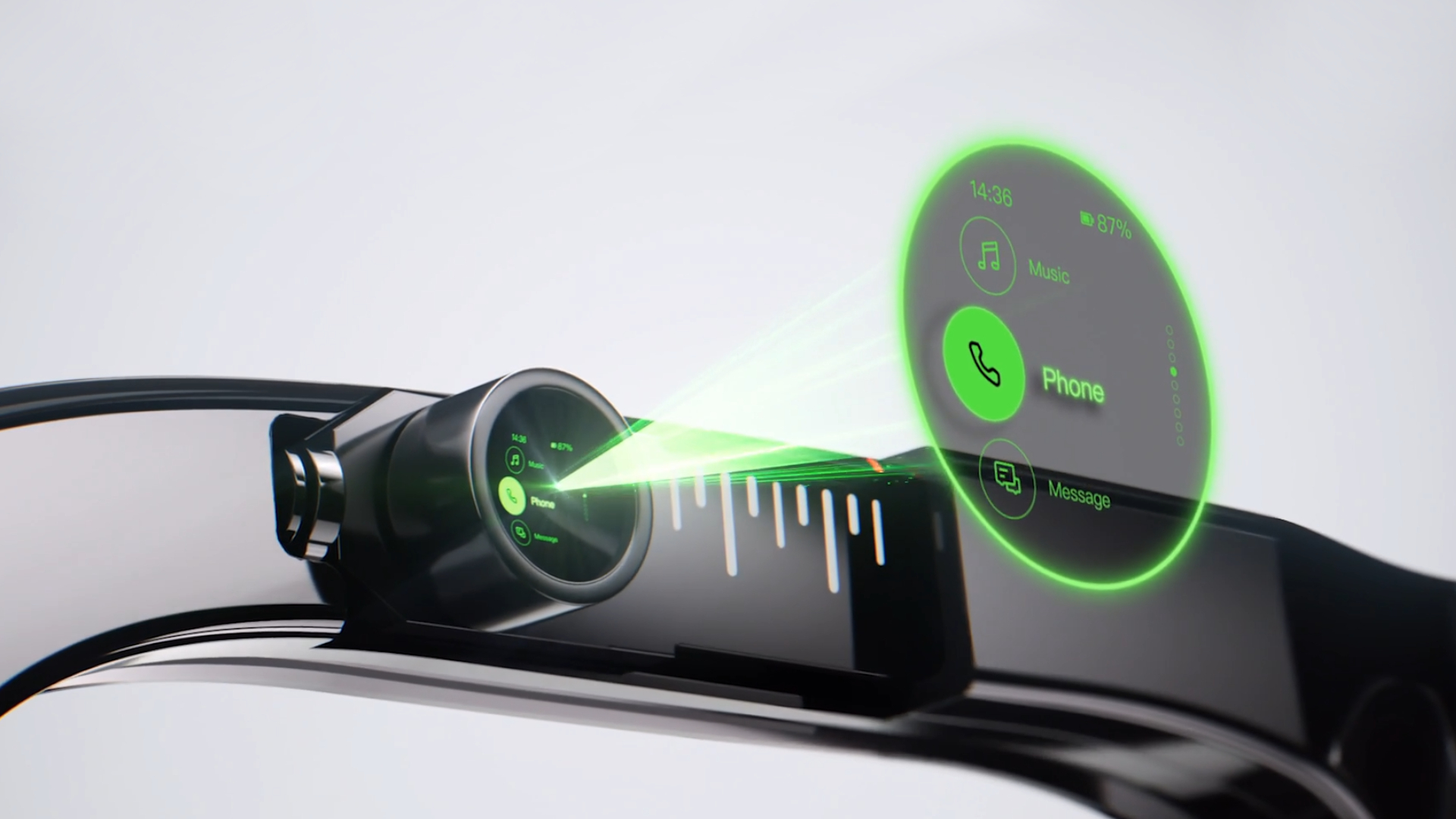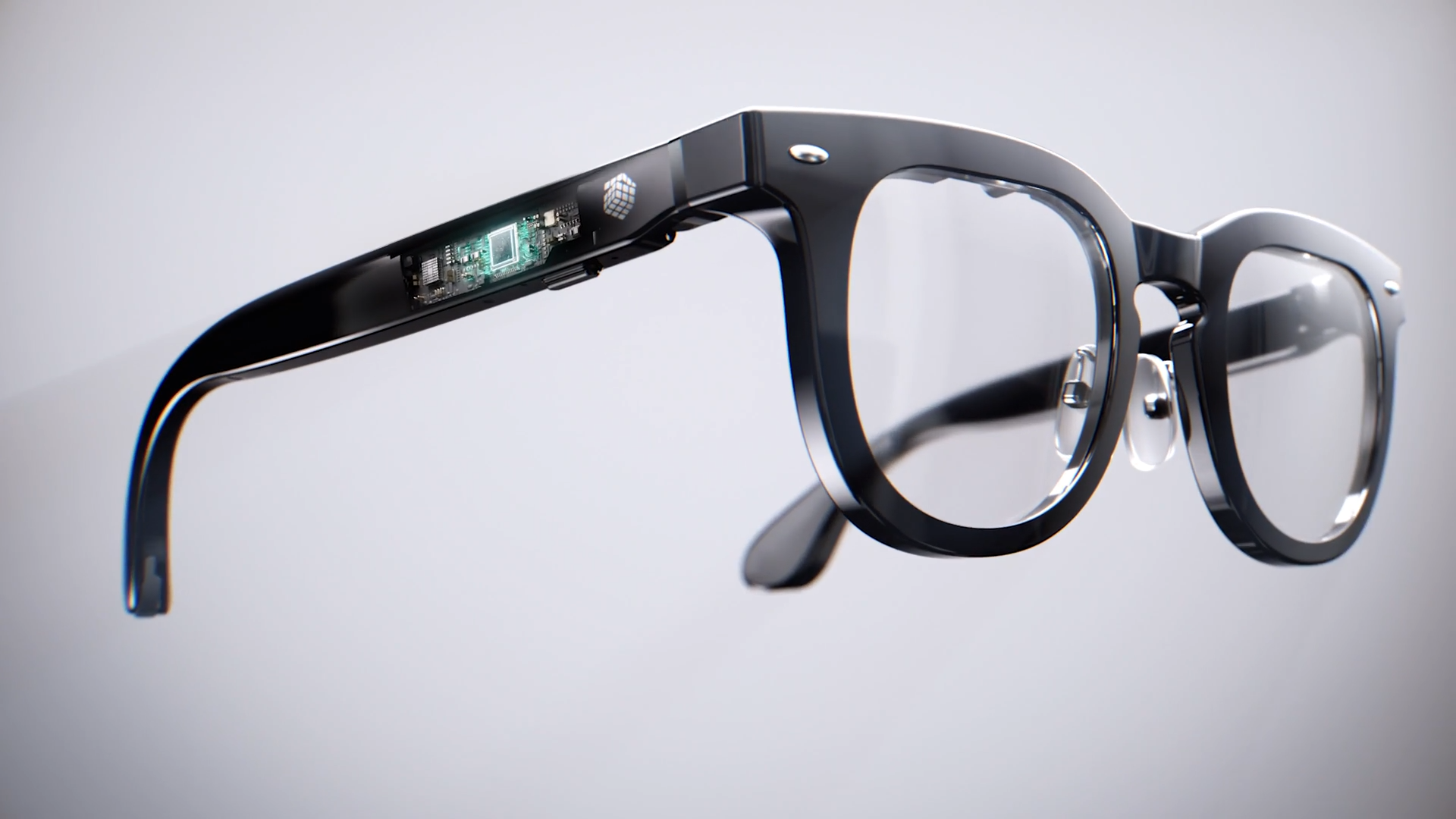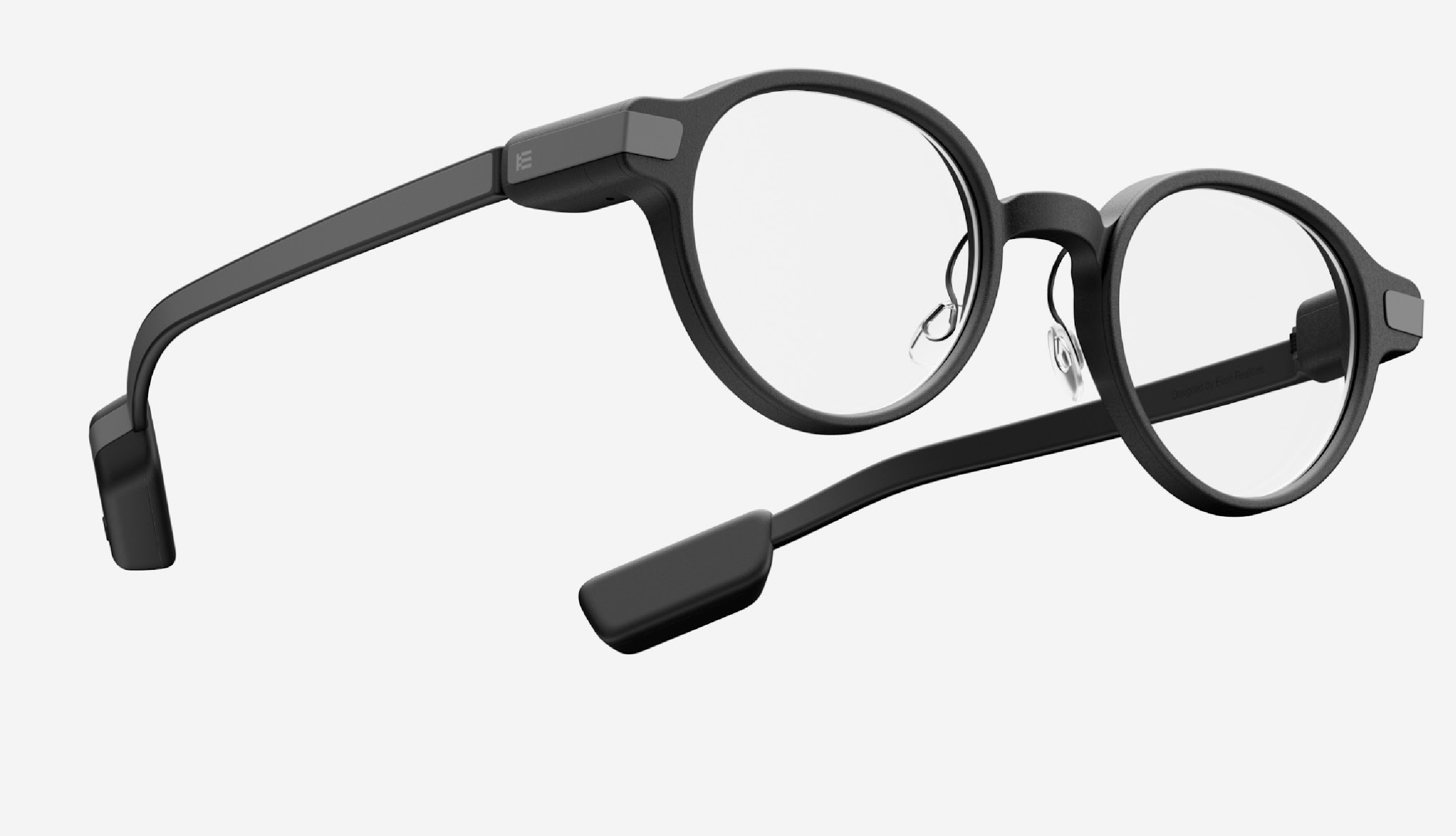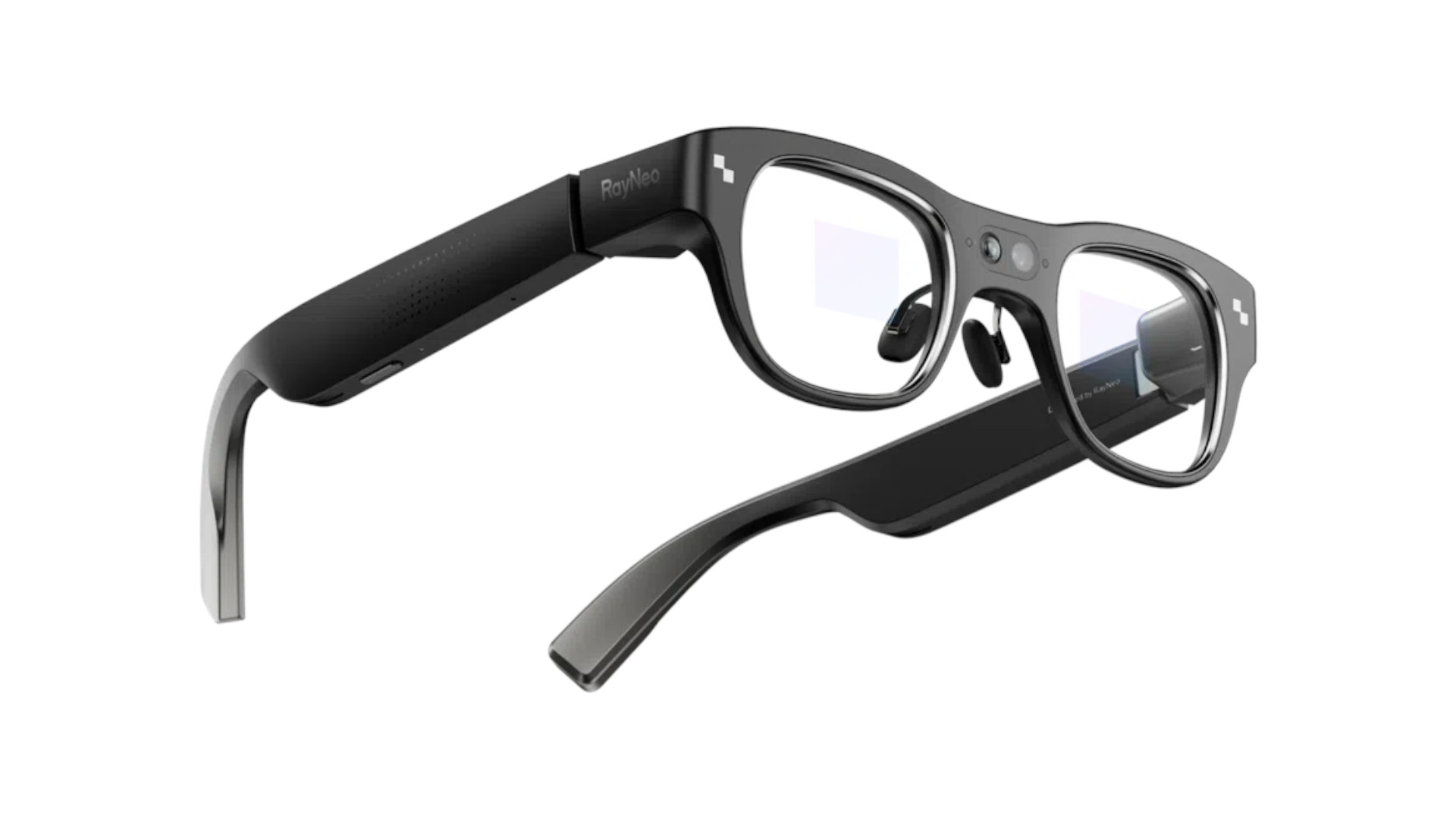Heads-up: A new smart glasses trend is taking over CES 2025
The heads-up display is making the leap from games to real life, and you won't want to miss it.

CES 2025 is in full flow and brands from around the world are populating Las Vegas, Nevada to show off innovation from a diverse selection of consumer tech markets, including my personal favorite: smart glasses.
Not only did smart glasses have a pretty successful 2024 thanks to the surprise mainstream success of the Ray-Ban Meta Smart Glasses, but last year also painted a pretty impressive vision of things to come thanks to display-touting concepts like Meta's holographic Orion glasses and Google's Android XR-powered frames. The latter adopts a multimodal Gemini 2.0 AI model previously seen in the Project Astra teaser from the Google I/O event of May 2024.
Heading into 2025, the next step for smart glasses was clear as day: while AI glasses like Meta's, the Solos AirGo3, and AirGo Vision would act as the tip of the spear, the addition of display tech would be the feature that truly pierces the hide of the mainstream.
Just days into a new year, we're already seeing several smart glasses featuring displays catch the eye of many amid the madness of CES 2025, and I predict these wearables might catch many by surprise by the time Samsung and Meta get in on the action with their own offerings rumored to release later this year.
This article is part of a Laptop Mag special issue highlighting news, reviews, interviews, and analysis of the best in consumer tech showcased at CES 2025, direct from Las Vegas, Nevada. For more coverage, check out Laptop Mag's CES 2025 special issue.

The heads-up-display could be a major player in 2025: Here are the glasses that prove it
We're over a decade removed from the original launch of the Borg-like Google Glass, and smart glasses have managed to squeeze an incredible amount of potential into frames that you might have to look twice at before you notice anything different about them.
While some smart glasses certainly deliver an uncanny valley sensation due to their thicker profiles or oversized temple tips, they've ultimately become incredibly useful and wearable, if not impressively fashionable at times too.
If the big trend for smart glasses in 2024 was the adoption of AI assistants, 2025 promises to usher in the next generation of these wearables by adopting a visual component for reading messages on the go, navigating new places with ease, and even subtitling our lives, including the ability to translate languages on the fly.
CES 2025 has given us our first real peek at this new smart glasses wave, and here are three impressive products worth keeping your eyes peeled to across the year ahead.
Halliday Smart Glasses

Thanks to their unique DigiWindow projection method and proactive AI agent, Halliday's glasses have been the talk of the town at this year's CES, and perhaps rightfully so.
Halliday's frames look indistinguishable from your regular pair of bifocals but offer an invisible display (controlled by a gesture-controlled smart ring) that projects images directly to the eye allowing wearers to discretely and privately send and receive messages, receive navigational prompts, display the lyrics to their favorite songs, and act as a teleprompter for speeches or presentations.
However, it's Halliday's proactive AI that steals the show here, a genuine copilot for your day-to-day life that can translate languages, fact-check information, and automatically take down notes and propose answers to questions asked of you, all in real-time.
While that sounds like a concept you'd have to wait until the next decade to enjoy, Halliday's glasses are expected to ship in late March, with pre-orders open now at the Halliday website.
Even Realities G1

The Even Realities G1 are a more elegant option that looks to bring a luxurious, minimalist styling to the smart glasses realm. Their slender frames and temples are the last thing you'd expect to see on a pair of smart glasses capable of projecting a virtual display in front of you. However, its chunky temple tips give away that there's more to these glasses than meets the eye.
Even Realities' G1 smart glasses use waveguide lenses to display its HUD, offering what the company calls "undisturbed connections" through notifications, prompts, and tools that won't distract from the world around you.
Glasses like the G1 and others can seamlessly integrate into your life, affording you a fast and fluid way to interact with your tech without becoming lost in it, be that through breaking the language barrier with real-time translations or firing off a few quick replies to messages mid-meeting.
They're simple, they're elegant, and they're available to order now in Panto or rectangular frames.
RayNeo X3 Pro

Perhaps the most advanced smart glasses on show at CES are the ones presented by TCL RayNeo. The X3 Pro are a follow-up to the company's impressively forward-thinking X2 frames that also offered Micro-LED optical waveguide displays, this time returning with a Qualcomm Hexagon NPU for powerful standalone AI features to run on alongside Qualcomm's powerful Snapdragon AR1 Gen 1 processor to handle augmented reality capabilities and even hand tracking.
The X3 Pro is a bit of everything rolled into one, and probably most closely aligned with Meta's Orion more than other glasses in this list, giving us a taste of tomorrow, today.
Its impressive features only continue, with a built-in high-definition camera for photography, an open-ear, four-speaker array for enjoying music, and a full-color virtual display that boasts a 200,00:1 contrast ratio with a 154% sRGB color gamut.
Quite frankly, it's one of the most advanced things you could put on your face today without duct-taping a MacBook to your head. You can expect these futuristic frames to launch in mid-2025, with more detailed release information to follow.
Meta and Samsung are rumored to join this vision for the future
You may not be familiar with the brands above, but this isn't a flash-in-the-pan venture by a few smaller names looking to cash in on the smart glasses hype.
It seems pretty clear from the actions of many smart glasses manufacturers that this year will be a big moment for face-worn displays. However, if that doesn't quite sell you, maybe the fact that both Samsung and Meta are rumored to be among the first two major names to take a stab at this technology themselves in 2025.
Samsung's rumored display-touting smart glasses could make an appearance as early as later this month, with the company's first Galaxy Unpacked event of 2025 taking place on January 22.
Alternatively, Meta will most likely showcase its third generation of Ray-Ban Meta smart glasses in September and is also hotly tipped to include a display in its latest model.
Why heads-up displays are having a moment
Having worn smart glasses daily for well over a year now, I feel pretty confident in my prediction that we're looking at one of the next staples of smart tech going forward. And the industry's desire to add a heads-up-style display to these devices could be exactly what's needed to propel smart glasses onto the faces of the average Joe or Jane, if for nothing else than convenience.
A report on cell phone usage released by Reviews.org in 2024 showed that the average American will check their phone up to 205 times per day, a 43% increase on the 144 tally racked up in 2023.
And why wouldn't we? Our smartphones have become a vital source of information in our everyday lives. It's how we stay in contact with those close to us, catch up on news or current events, browse entertainment, and even play games. Smartphones can do so much, that the same report suggested that, on average, Americans' screen time sits at just over five hours per day.
I'm not here to judge that figure or lay claim to the opinion on whether it's a good or bad thing. To each their own, that's my perspective. However, the heads-up display offered by smart glasses seems like the natural follow-on from our pocket-fumbling obsessiveness to check out devices.
To some, it'll be a way of staying connected to things without getting too distracted by their smartphone's other features, to others, it'll be a way of distancing themselves from their smartphone and opting for a more relaxed and aware approach to their digital lives.
Either way, both groups benefit, and that's without thinking about the great benefits to be found in navigation tools or on-demand AI assistance, all without completely pulling you out of the moment by forcing you to pull out your smartphone.
More from Laptop Mag

Rael Hornby, potentially influenced by far too many LucasArts titles at an early age, once thought he’d grow up to be a mighty pirate. However, after several interventions with close friends and family members, you’re now much more likely to see his name attached to the bylines of tech articles. While not maintaining a double life as an aspiring writer by day and indie game dev by night, you’ll find him sat in a corner somewhere muttering to himself about microtransactions or hunting down promising indie games on Twitter.

